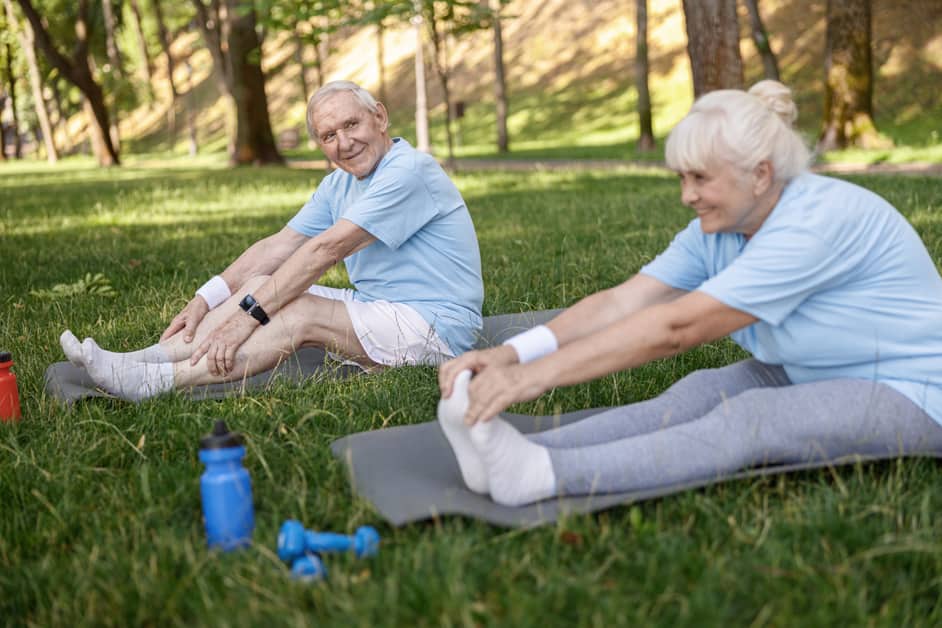Introduction
Knee injuries can be excruciating and disable a person. They may occur due to an accident or sudden movement, like jumping or turning quickly. Knee pain can range from a mild annoyance to severe inflammation.
To stay healthy and comfortable, prevention is key. Stretching, strengthening exercises and agility training can help protect against knee injuries. Also, before taking part in activities with a higher risk of injury, it’s a good idea to seek medical advice.
This guide outlines how people can reduce their risk of knee injuries and keep enjoying activities outside the home:
- Stretching
- Strengthening exercises
- Agility training
Understanding Knee Injuries
Knee injuries can happen. They can come from playing sports or from everyday activities. Knowing the anatomy of the knee, the usual causes and the therapies and exercises can help. This article is a guide. It will explain the knee’s anatomy, the main causes of knee injuries and how to do exercises and techniques to avoid them.
Common Types of Knee Injuries
Knee injuries can vary from mild to severe. They can affect daily activities, cause pain and disrupt exercise. Three common types are ACL tears, meniscal tears and patellofemoral syndrome.
-
ACL Tears: The ACL connects the femur and tibia. Injury can happen due to bad landings or sudden cuts during sports. Pain is a symptom, but building strong muscles and proper form can reduce risk.
-
Meniscal Tears: There are two disks between the femur and tibia, acting as shock absorbers. Sudden movements can strain or tear them. Pain and swelling indicate a tear and medical attention should be sought. Stretching can help reduce risk.
-
Patellofemoral Syndrome: This happens to people who squat or kneel for long periods. Athletes playing sports involving squatting are prone to it. Pain, cracking noises and physical therapy exercises may be needed. Surgery may be necessary if symptoms persist. When participating in strenuous activities, it is important to seek advice from a doctor before taking any self-diagnosing assumptions.
Risk Factors for Knee Injuries
Knee injuries have various causes, and the risk factors depend on age, activity and health. Common risk factors are:
- Repetitive movements: Straining the same area over time increases the chance of injury, especially for athletes who run, jump and twist a lot.
- High impact activities: Sudden stops, starts and landings from heights in sports like basketball, football and skiing can lead to knee injuries.
- Muscle imbalance: If certain muscles strengthen too quickly, it throws off the balance and increases injury risk. Make sure your workouts include exercises for both quads and hamstrings.
- Lack of flexibility: Poor flexibility can reduce stability and increase injury risk. Check your flexibility levels with stretching exercises.
- Flat feet or overpronation: Poor alignment and inward turning of the feet (overpronation) during walking or running puts extra stress on the lower leg joints and increases the chance of injury.
Prevention Strategies
Knee injuries: prevention is essential! Build strength in the muscles around the knee, stretch them, and work on balance and technique. Exercises, techniques, and tips – all these can help you avoid knee injuries. Get to know them in this section.
Exercise and Strength Training
To keep safe from knee injuries, exercise and strength training are a must. Doing regular exercise will give stronger muscles around the knee joint and more stability. To strengthen knees, try squats, leg lift and extended heel raise, and lunges. Follow a regular muscle-strengthening program to protect your knees. Before beginning, consult your doctor. They can tell you if any activity might put stress on your joints or interfere with healing.
Proper Form and Technique
To prevent knee injuries, use proper form and technique in any sport or physical activity. When putting weight on your knees, make sure to push downward through the heel and arch of the foot and outward through the hip. This spreads the weight evenly across the bones. Keep your feet slightly wider than hip-width apart for extra stability.
Focus on sitting back into your hips when squatting. Leaning forward too far or allowing momentum to pull you forward while descending down can lead to strain on your knee. A reverse lunge is a great variation that helps keep internals stabilised and make it easier to stay upright. Stand tall with one foot behind you then drop the bent knee down towards the floor until it reaches a 90 degree angle. Keep pushing up through the front heel while keeping the hips forward/angled down towards the heel. This should help minimize stress placed on the joint.
Wearing the Right Shoes
Wearing the right shoes is key for preventing knee injuries. Look for shoes with cushion, arch support and stability. Invest in quality athletic shoes if exercising or playing sports. Make sure the heels are level with the toes to avoid leg misalignment. Also, rotate between different types of shoes, depending on the activity. This allows different pressure points to heal.
Stretching and Flexibility
Stretch! Start with light activities like walking and gentle stretching. Then move on to more active stretches, like squats, lunges, leg lifts, calf raises, butt kicks and compound movements. Hold each stretch for thirty seconds, breathing deeply and evenly.
Flexibility exercises can help improve knee range of motion. Try the cross knee hug, seated hip openers, ankle mobility drills and kneeling glute stretch. Use a foam roller or massage ball to loosen tight spots. Yoga poses like Warrior I and II or Downward Dog can create muscle elongation and stability.
Conclusion
Knee injuries are common, specially for athletes. To stop them, there are simple exercises and techniques to use. Stretching tight muscles and strengthening muscles around the knees can help. Knowing proper form and how to use support will help keep away strains and other injuries.
Taking small steps today can protect your knees tomorrow. Prevention is key!
Frequently Asked Questions
Q: What are some common knee injuries?
A: Common knee injuries include ACL tears, MCL tears, torn meniscus, patellar tendonitis, and IT band syndrome.
Q: What exercises can help prevent knee injuries?
A: Strengthening the muscles around the knee can help prevent knee injuries. Squats, lunges, leg extensions, and leg curls are some exercises that can help. Additionally, balancing exercises such as single-leg squats and single-leg deadlifts can also help improve knee stability.
Q: What techniques should I use when exercising to prevent knee injury?
A: When exercising, it is important to maintain proper posture and form. Additionally, it is important to move slowly and smoothly when doing the exercises. It is also important to warm up and cool down before and after exercising.





